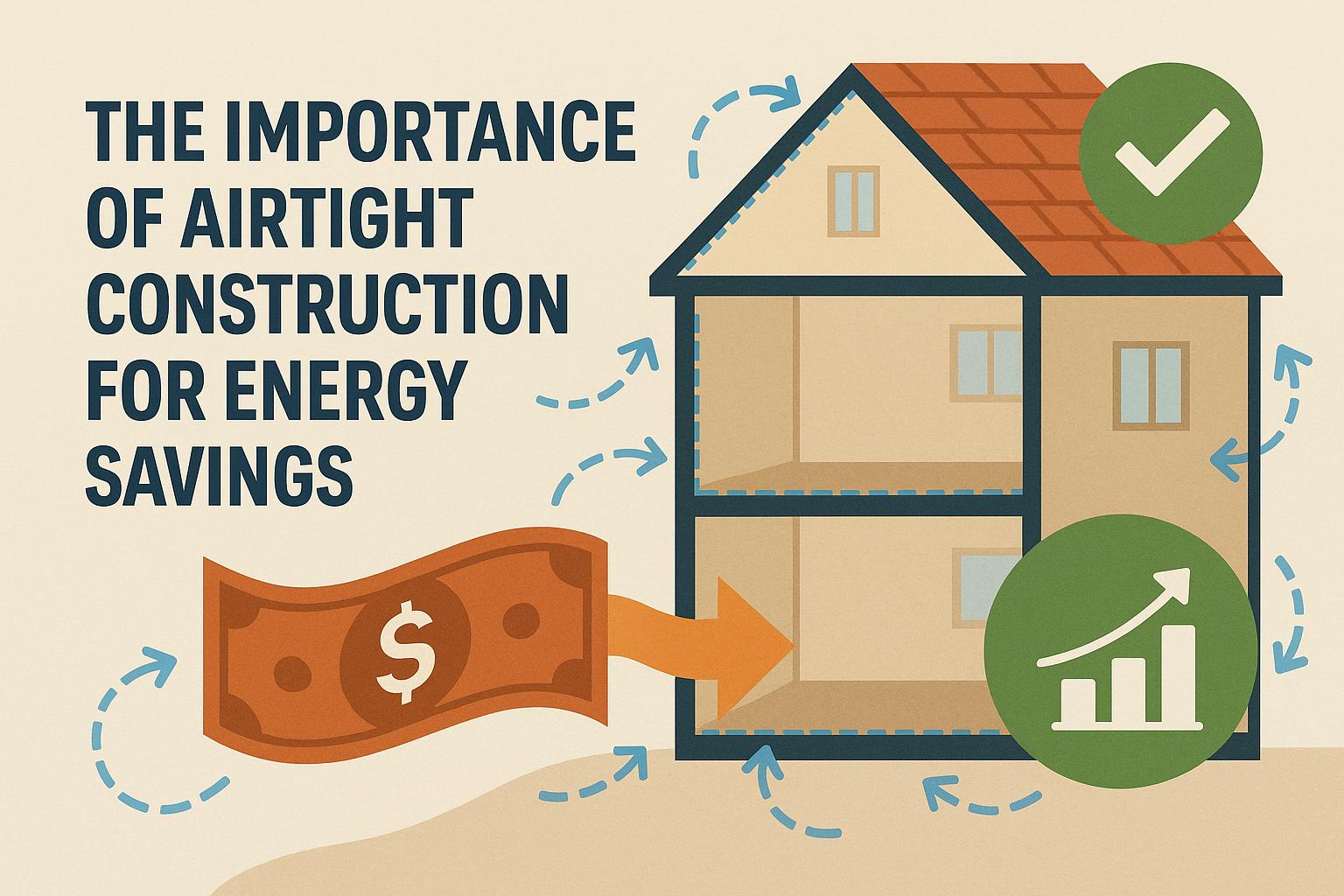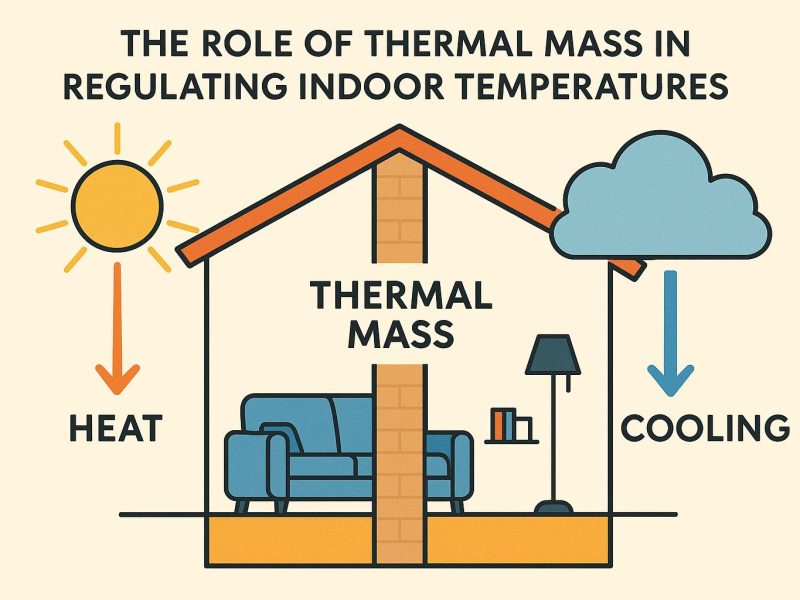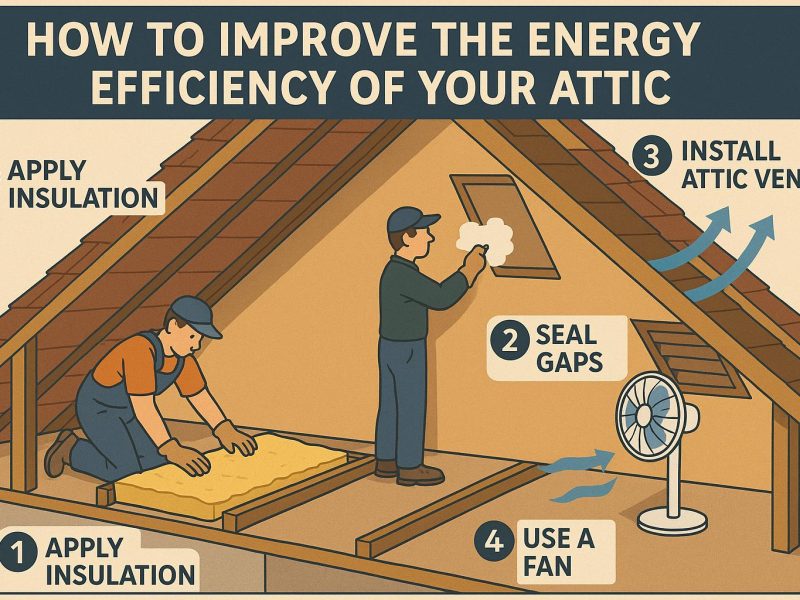The Role of Airtight Construction in Energy Efficiency
Airtight construction is a pivotal aspect of contemporary building practices, aimed at enhancing energy efficiency. By curtailing the unintentional exchange of air between the indoor and outdoor environments, builders can effectively reduce energy consumption, which contributes to significant economic and environmental benefits. Understanding this approach, its implementation, and its benefits is key in promoting sustainable building methods.
Understanding Airtight Construction
Airtight construction involves the development of a building envelope that permits minimal air leakage. This airtightness is achieved through meticulous sealing of joints, gaps, and various openings present in the structure. The implementation of materials such as weatherproof membranes, sealants, and specialized tapes is integral to maintaining this tightness. These materials are commonly employed in new construction projects, ensuring that the finished structure adheres to modern standards of energy efficiency.
The Science Behind Airtight Construction
In the core of airtight construction lies a systematic approach to controlling and minimizing air infiltration. The process entails utilizing advanced building technologies and materials designed explicitly for enhanced sealing capabilities. Weatherproof membranes serve as barriers against environmental elements, preventing moisture intrusion and air leakage. Sealants fill in gaps where different building components meet, while specialized tapes reinforce these areas, ensuring long-term integrity of the airtight envelope.
Energy Savings through Reduced Air Leakage
The primary advantage of adopting airtight construction practices is the significant reduction in energy loss through uncontrolled air exchange. Air leakage can be responsible for a notable share of the total energy consumption in residential and commercial buildings. By effectively regulating this exchange, less energy is required for heating and cooling purposes, which culminates in lower utility bills. Consequently, buildings with airtight construction demonstrate an impressive return on investment due to reduced operational costs.
Impact on Heating and Cooling Systems
A major advantage offered by airtight buildings is their capacity to sustain stable indoor temperatures with better efficiency. Due to decreased air infiltration, heating, ventilation, and air conditioning (HVAC) systems are able to function more efficiently, often needing less frequent operation and maintenance. This efficiency not only extends the lifespan of these systems but also significantly reduces energy expenditures. Homeowners and building managers witness tangible benefits through lower monthly energy bills and reduced maintenance costs.
Environmental Benefits
The environmental ramifications of airtight construction extend beyond energy savings. By curbing energy use, these buildings contribute to lowering global carbon footprints. Buildings remain significant contributors to global energy consumption, and the adoption of airtight construction methods helps in decreasing the need for energy, subsequently reducing greenhouse gas emissions. This positions airtight buildings as central players in the efforts towards sustainable development and environmental stewardship.
Role in Combating Climate Change
Transitioning toward more airtight buildings aligns with broader climate action strategies. Governments and environmental agencies recognize the value of improving building performance as a cost-effective means to meet climate targets. Airtight buildings, therefore, contribute to a larger framework of actions aimed at reducing global emissions and fostering resilience in the face of climate change.
Health and Comfort Factors
In addition to energy efficiency and environmental impact, airtight construction offers substantial health and comfort benefits. An airtight building ensures improved indoor air quality. Incorporated within these structures are properly controlled ventilation systems, vital for circulating fresh air while minimizing any pollutants and allergens. This approach enhances the overall comfort and health of occupants, making airtight construction an appealing choice for both residential and commercial environments.
Enhancing Indoor Living Conditions
Airtight construction creates a controlled environment where ventilation systems can precisely regulate the quality of the air indoors. Such systems draw in fresh air systematically and expel stale air, ensuring a consistent supply of oxygen while filtering out potential contaminants. This results in healthier living and working spaces, reducing the incidence of respiratory ailments and other health issues related to poor air quality.
Challenges and Considerations
Despite its many benefits, implementing airtight construction techniques is not without challenges. The higher upfront costs associated with specialized materials and enhanced workmanship demand a significant investment. Additionally, precise execution of these construction practices is necessary to achieve optimal energy efficiency. A critical aspect of designing and constructing these buildings is the incorporation of efficient ventilation systems. Such systems are indispensable in preventing moisture and condensation problems, which, if unaddressed, could negatively impact structural integrity and indoor air quality.
Balancing Airtightness and Ventilation
Integrating effective ventilation with airtight methods involves a nuanced balance. While airtight buildings focus on minimizing unwanted air exchange, they must not become hermetically sealed to the point where airflow is completely restricted. Rather, ventilation systems must be designed to complement the airtight envelope, ensuring that air exchange occurs in a controlled and efficient manner to maintain indoor air quality and comfort.
Conclusion
The importance of airtight construction in achieving energy savings is profound and cannot be underestimated. Although there are initial investments required for specialized materials and design expertise, the long-term benefits in cost savings, reduced environmental impact, and enhanced occupant comfort validate this endeavor for modern building projects. Embracing airtight construction techniques is fundamental to reducing energy consumption and advancing towards a more sustainable future. As construction practices evolve, incorporating airtight methods will continue to be an essential step in the transformation towards resilient and energy-efficient buildings.



